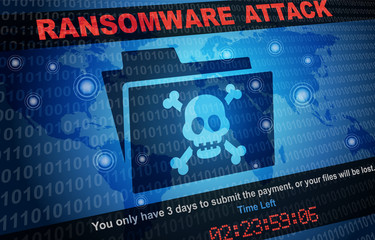In today’s digital landscape, ransomware stands out as one of the most significant cybersecurity threats affecting organizations across various sectors. This malicious software locks users out of their systems or encrypts their data, demanding a ransom for restoration. As attacks become more sophisticated, it’s crucial to understand how ransomware impacts critical industries like healthcare, education, and infrastructure, along with the concerning trend of companies withholding information about these incidents.
What is Ransomware?
Ransomware is a type of malware that restricts access to computer systems or files by encrypting data. Once the system is compromised, attackers demand payment, often in cryptocurrency, to unlock the data. The consequences can be severe, leading to financial losses, reputational damage, and even threats to human life.
Impact on Healthcare
The healthcare sector is particularly vulnerable to ransomware attacks. In early 2023, a major U.S. healthcare provider faced a ransomware attack that disrupted patient care and compromised sensitive data. Such incidents highlight the critical nature of healthcare data and the severe implications when systems go offline. The pressure to pay ransoms can endanger patient safety and financial stability for these institutions.
Ransomware in Education
Educational institutions are increasingly attractive targets for ransomware attackers. In September 2023, several U.S. school districts were hit by coordinated attacks that disrupted classes and exposed sensitive information. These incidents underscore the urgent need for schools and universities to enhance their cybersecurity measures and train staff and students to recognize potential threats.
Threats to Critical Infrastructure
Ransomware also poses significant risks to critical infrastructure. In March 2024, a ransomware attack on a water treatment facility halted operations, exposing vulnerabilities in essential services. Such attacks can disrupt services that millions rely on daily, leading to immediate and far-reaching effects.
The Transparency Issue
A concerning trend in recent ransomware incidents is the lack of transparency from affected companies. For instance, Caesars Entertainment experienced a ransomware attack in August 2020 that involved unauthorized access to customer data. Details of the breach were disclosed only in 2023, raising questions about organizational accountability in reporting cyber incidents. This reluctance to disclose can erode consumer trust and leave individuals unaware of potential risks to their data.
Strategies for Prevention and Response
Organizations across all sectors must adopt proactive measures to combat ransomware threats. Here are some best practices:
1. Regular Backups: Maintain up-to-date backups of critical data stored offline or in secure cloud services.
2. Employee Training: Educate staff on recognizing phishing attempts and the importance of cybersecurity hygiene.
3. Software Updates: Regularly update systems and software to patch vulnerabilities.
4. Incident Response Planning: Develop and rehearse an incident response plan to minimize damage in the event of an attack.
Conclusion
Ransomware is an evolving threat that poses serious risks across multiple sectors, particularly healthcare, education, and critical infrastructure. The lack of transparency from companies regarding these incidents complicates the issue further. As attacks grow in frequency and sophistication, it is imperative for organizations to remain vigilant and invest in robust cybersecurity measures. By understanding the risks and implementing preventive strategies, we can work towards safeguarding our systems and data from cybercriminals.

